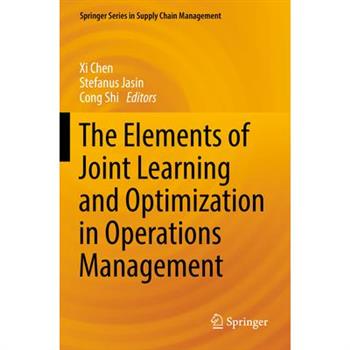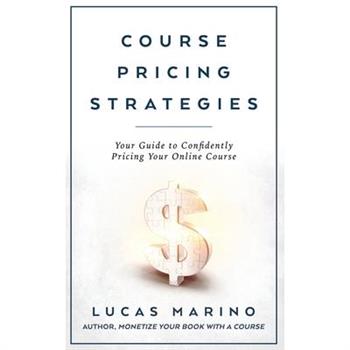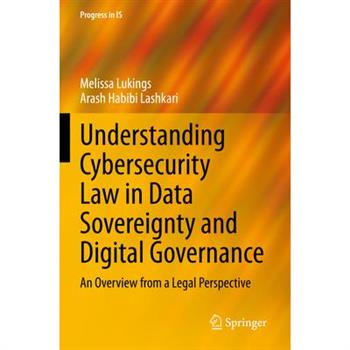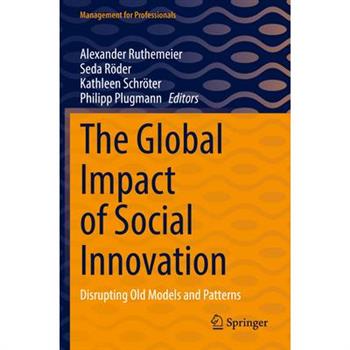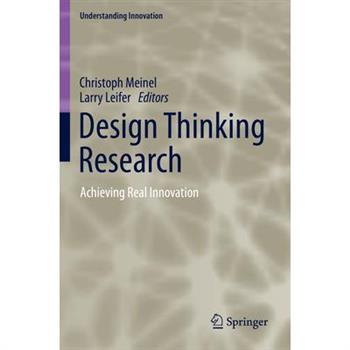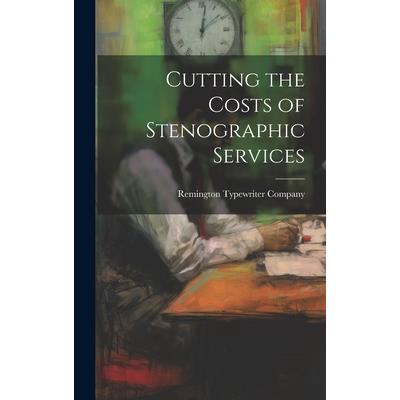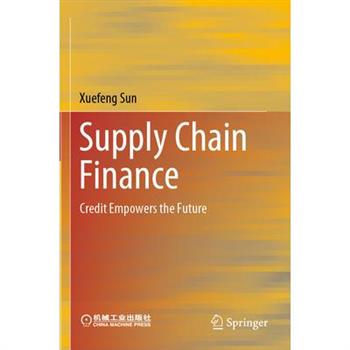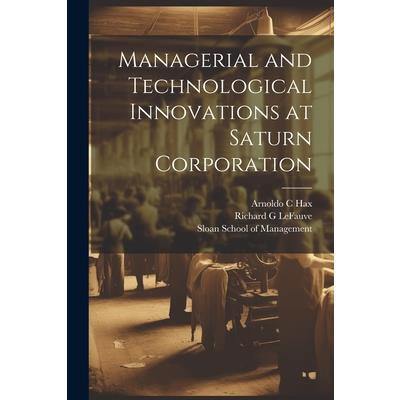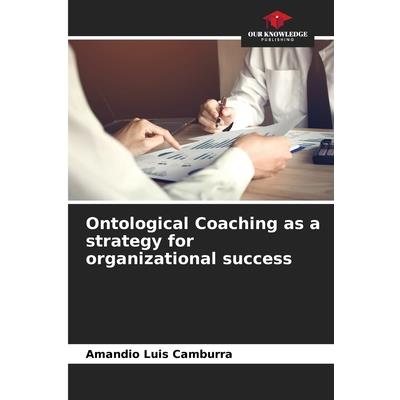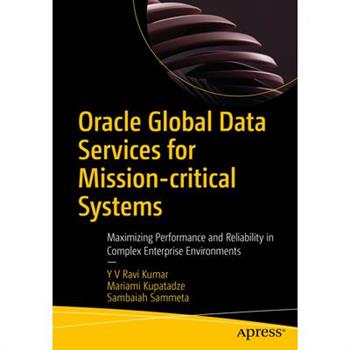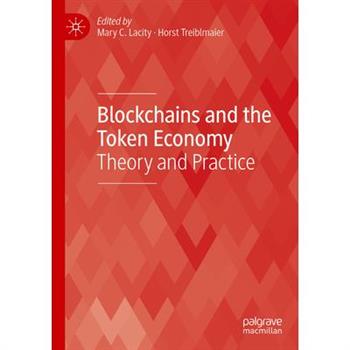Big, Open and Linked Data
This book examines the recent evolution of the concept of data as an economic and managerial phenomenon. The author first describes and discusses open data and then introduces the concept of linked data, with a focus on assets for reuse. Furthermore, he addresses the main challenges of big data. Value is identified as the main incentive for the adoption of linked data; accordingly, the next two chapters study sources of data value from a macroeconomic and micro economic perspective, respectively. This contributes to the systematization of important issues at the crossroads of enterprise data and data sharing: data ownership, personal data, and data privacy. In turn, the book reveals the role of innovation as a main vehicle for creating value by unifying big, open, and linked data. It studies the ways in which value can be created, transferred, and captured in the form of business models, before the closing chapter verifies the data unification model by combining open and linked geographical data with big data from a major telecom company.
Supply Chain Resilience
Every global crisis highlights the strategic importance of industrial and non-profit supply chains for society. In terms of coping with unforeseen and unpredictable events, supply chain resilience enables the parties and networks involved to stay successful during and after the disruption. Furthermore, a resilient supply chain contributes to the sustainable competitive advantage of the entire value chain. Written by scholars and practitioners alike, this book not only puts forward a new framework for resilience in supply chain management, but also presents best practice cases from various areas and industries. As a particular highlight, it includes a Delphi study that gathers state-of-the-art insights from supply chain leaders. In addition to practical approaches, methods and tools, the book also offers food for thought on the future of supply chain resilience. As such, it offers a valuable resource for current and future managers in the public and private sector, aswell as researchers and students engaged in this field.
77 Pillars of Quality and the Pursuit of Excellence
This book offers a basic and practical guide for a manager, quality practitioner, or anyone interested in learning and understanding the fundamental principles, concepts, tools, and techniques of quality management and process improvement. This book enables managers to have a strong foundation for effective management and improvement of operations. It strengthens quality practitioners' approach to people, products, or services and process improvement, to influence without authority. It provides practitioners with a comprehensive understanding of the contemporary concepts of quality, guiding principles, and quality tools and techniques and on successfully implementing them. It helps enhance how practitioners perform their work and inspires them to strive for excellence.The book begins with an introduction and an overview of quality, followed by listing and explaining the selected 77 pillars (basic principles, concepts, and tools) of quality, grouped under the themes of quality, Six Sigma, and Lean Management. It examines the logical understanding of these pillars and how to implement them, providing practical examples and beneficial real case studies. The stories are based on the learning and practical experience of the author--a certified Lean Six Sigma Master Black Belt, a quality manager, and a university lecturer.This book benefits employees, partners, and customers of any organization, offering a great reference for practitioners and academics alike. It serves as a call to reflect on basic quality pillars first, before embarking on a quality improvement journey. It provides a solid foundation for managers and practitioners to exceed their customers' expectations and excel in managing their business operations.
The Elements of Joint Learning and Optimization in Operations Management
This book examines recent developments in Operations Management, and focuses on four major application areas: dynamic pricing, assortment optimization, supply chain and inventory management, and healthcare operations. Data-driven optimization in which real-time input of data is being used to simultaneously learn the (true) underlying model of a system and optimize its performance, is becoming increasingly important in the last few years, especially with the rise of Big Data.
Innovative Decision-Making Techniques
This book provides a blend of quantitative and qualitative approaches to decision making, while also bridging the gap between the theory of how to make good decisions versus how people actually make decisions. The authors present the tools and techniques of decision analysis to learn how to become a FOCCUSSED decision maker: Identify and properly Frame the decision or problem at handSpecify the goals, Objectives, and values that you are trying to achieveDevelop creative, meaningful Choices from among which you can chooseEvaluate the Consequences of selecting each alternative using your goals, objectives, and valuesThink about the key Uncertainties that could impact the decisionUnderstand the Swaps and trade-offs that you are willing to makeDevelop an approach for implementing your SolutionElicit the data you'll need from a variety of sourcesand Disseminate and communicate your decisions to others. The authors define a decision as the choice among alternatives, based on how we value and trade-off their pros and cons, made in the face of uncertainty about what will actually happen. The decision-making process is presented as having three pillars to support the decision maker: Preferences-what we prefer, what meets our goals and objectives, and the recognition that preferences are personal to the one making the decision; Alternatives-the choices, options, or courses of action that we have, and over which we have some degree of control; and Information-what we know about the situation, what we don't know, how we connect choices to outcomes, and how we deal with uncertainty. Key components of good decision-making include how to define your goals and objectives, how to incorporate uncertainties that we all face, and how to develop better alternatives, all of which are discussed. Sophisticated techniques are presented in a way that is accessible to the average decision maker. Probability theory is utilized to improve decisions, and uncertainties are captured in decision trees. Risk avoidance, risk transfer, and risk mitigation are also discussed. Readers will gain a clear understanding of how to articulate the goals and objectives that should be the focal point of any decision.
How to Set a Competitive Price
Businesses that concentrate on the value-rather than the cost-to the client can demand almost any price they want. Pricing for Profit educates business owners how to break free from industry pricing and secure compensation that accurately reflects the value of the good or service being provided.The value of their goods or services will be quantified, price and value buyers will be distinguished, offers will be bundled for a competitive edge and increased customer value, and a strong marketing strategy that conveys value will be developed by readers.Small businesses' potential to make a profit is constrained by the low pricing they feel forced to offer, which also slows their response to shifting customer demands. Anyone who wishes to increase unit sales, finish more deals overall at higher prices, and earn more money with less needless work must read this approachable and useful advice. It is jam-packed with helpful calculations, sample scripts, understandable examples, educational exercises, and more.
Course Pricing Strategies
You have a great course idea......because you know how to get results.There's just one problem. You don't know how to price your course.Setting a course price feels risky. Pricing too low harms your bank balance and people might think it's not valuable. Conversely, pricing too high may hurt sales.Asking your friends isn't the answer.You need Dr. Lucas C. Marino, PMP, who is a serial entrepreneur in training businesses and co-founder of the Empire Builders Masterclass. Lucas helps entrepreneurs and authors launch and sustain online training products.In this book, you'll learn: -The Four Points for Building Your Course Pricing Strategy-The industry norms and habits-About single payments, payment plans, and subscriptions-How affiliate programs work-If you should beta launch or presell your course-And MUCH more...Understanding the factors which influence pricing decisions is critical to developing a pricing strategy. A little time reading through these valuable points will give you the ability to grow your business and fan base.Why stop at one course?This book will serve you well now and in the future.You'll love Course Pricing Strategies because getting the price right can change your life and if done well, it will let you reach more people and change their lives, too.
Procurement Playbook
Perhaps the greatest frustration of procurement students and faculty is the lack of a codified procurement body of knowledge (PBoK). At the same time, the demand for relevant procurement skills has never been greater. The Procurement Playbook consists of ten chapters of essential procurement knowledge and skills. Written by an award-winning panel of experts, consultants and academics, the Playbook distils essential procurement knowledge using a structured pedagogical framework. Organisations are at various stages of their development towards procurement excellence. Existing texts on the market tend to convey procurement through a manufacturing lens or position private and public procurement as separate disciplines. The Playbook helps practitioners organise their thoughts and speak with clarity and confidence about the art and science of procurement. The text is an ideal companion for middle-level executives seeking to acquire procurement skills and provides a blueprint for training and training specialists who design procurement courses.Achieves a balance between theory and a practical, skill-based approach to the procurement discipline. Each chapter contains a glossary of terms, key questions and learning objectives. Ideal for executives looking to acquire procurement skills, the Playbook is interspersed with short cases, research insights and debate points.Provides a blueprint for training and education specialists looking to design procurement courses.Chapter overview: Introduction Perspectives of procurement Identifying needs and writing specifications Supplier screening and selection Market analysis Supply cost and prices Outsourcing Procurement value Spend analysis Supplier Performance Management
Instructional Design on a Shoestring
Design Effective Training Programs Despite Limited ResourcesInstructional Design on a Shoestring offers talent development professionals a process for developing effective training programs, even with limited resources. Expert instructional designer Brian Washburn applies the ADDIE model of instructional design and the Build-Borrow-Buy approach to provide guidance, quick tips, and shortcuts for designing a range of training modalities, including in-person, virtual and asynchronous, and self-guided e-learning. With this book, you will learn to build the structure of the instructional design process, effective formal and informal learning experiences, and an ecosystem that supports the learning initiatives. This crash-course of a book also guides you on working with subject matter experts, supervisors, and early testers and drawing learning design ideas from unfamiliar places. You'll learn how and when to make decisions for using tools and technologies, hiring external help, and purchasing off-the-shelf training programs to speed up the work.Even if you don't have a ton of time or access to a lot of money, you can still produce an effective learning experience based on sound educational theory and adult learning principles.About the On a Shoestring SeriesThe Association for Talent Development's On a Shoestring series helps professionals successfully execute core topics in training and talent development when facing limitations of time, money, staff, and other resources. Using the Build-Borrow-Buy approach to problem solving, this series is designed for practitioners who work as a department of one, for new or "accidental" trainers, instructional designers, and learning managers who need fast, inexpensive access to practical strategies that work, and for those who work for small organizations or in industries that have limited training and development resources.
Selling with Integrity
'Selling with Integrity: Sell Like Jesus- The Perfect Role Model!' is a transformative guide that invites sales professionals to embark on a journey of embracing Jesus as the ultimate Role Model in Sales. Through the exploration of eight fundamental steps in selling, this book reveals how biblical principles and Jesus' example can reshape the sales landscape.Drawing from Jesus' compassion, integrity, and servant leadership, readers discover how to create meaningful connections with customers based on love, trust, and empathy. Each chapter presents practical applications of Godly virtues in prospecting, preparing, approaching, uncovering needs, proving value, handling objections, up-selling, cross-selling, closing, and providing exceptional customer service.With compelling examples from Jesus' ministry and relevant biblical scripture, 'Selling with Integrity: Sell Like Jesus- The Perfect Role Model!' empowers a sales professional to transcend conventional sales techniques and embrace an authentic approach that reflects the heart of Jesus. This transformative journey leads to not only enhanced sales performance but also a profound impact on the lives of those served.Go ahead! Sell with Christ-like Excellence!
Supply Chain and Procurement Quick Reference
Embark on a comprehensive exploration of the intricacies of modern procurement and supply chain management with 'Supply Chain and Procurement Quick Reference: How to navigate and be successful in structured organizations.' Tailored for seasoned industry veterans and newcomers, this authoritative guide is your essential toolkit for delving into core principles and industry best practices, covering realms from strategic purchasing and category management to international procurement mastery.Venture into advanced domains like contract negotiation, supplier relationship management, cost control tactics, and ethical sourcing. This guide furnishes you with a comprehensive skill set vital for navigating today's swiftly evolving business terrain. As you traverse through each segment, discover real-world case studies, actionable metrics, and innovative approaches that not only unravel complex notions but also prepare you for leadership roles within your organization's purchasing sector, or markedly augmenting your current position.Whether your aim is to establish a robust procurement department, refine your existing supply chain operations, or lay a solid groundwork for upcoming industry examinations, this guide presents invaluable insights and pragmatic tools for career progression. Each chapter is meticulously designed to enhance your problem-solving acumen and strategic decision-making, quintessential traits for anyone earnest about mastering the procurement and supply chain domain.Your journey towards professional mastery commences here. Laden with practical exercises, case studies, and contemporary industry insights, this book transcends being merely a guide-it's a comprehensive toolkit poised to propel you into the higher realms of procurement and supply chain expertise. Strategize your next career stride by equipping yourself with the profound knowledge and skills encapsulated within these pages. Let this guide be your gateway to a distinguished stature in the dynamic, multi-dimensional world of procurement and supply chain management.
Putting a Value on Your Offering
Businesses that focus on the value they provide to customers, rather than the price they charge, have the freedom to set virtually any price they like. Business owners may learn how to break free from standard pricing practices and charge what they're really worth in Pricing for Profit.Readers will be able to put a dollar amount on the worth of their products or services, differentiate between price and value purchasers, bundle offers to get an edge in the market and delight customers, and craft a compelling marketing strategy that effectively communicates value.The cheap prices small businesses feel compelled to give hinder their ability to turn a profit and also make it harder for them to adapt to the needs of their clientele. This accessible and practical advice is a must-read for anyone who wants to boost unit sales, close more deals overall at higher prices, and make more money with less unnecessary work. It's loaded with useful formulas, script examples, clear explanations, interactive activities, and more.
Extending the Complexity of the Leaky Pipeline Phenomenon in Natural Science
​In the realm of global innovation, STEM powers knowledge-based societies. However, ongoing gender disparities curtail the complete utilisation of human capital. As argued in the goal congruity theory, women's choices to communal goals prompts female exits from STEM. Exploring this theory in natural science and academia, two questions arise: 1) Does the "leaky pipeline" persist, and where are gaps? 2) Do female scientists leave to afford other goals? Stats show early career gender balance, but senior positions lack women. Notably, men dominate decision-making roles. Qualitative research with 26 female scientists reveals an overall positive and communal perception of natural science and academia. Moreover, the perceived affordance of communal values within science majorly contributes to the desire of female researchers to continue pursuing an academic path. These findings contradict the literature-established goal congruity theory and thus, provide an experienced-based foundation to extend the complexity of the leaky pipeline phenomenon in natural science.
Design Thinking Research
Extensive research conducted by the Hasso Plattner Design Thinking Research Program at Stanford University in Palo Alto, California, USA, and the Hasso Plattner Institute in Potsdam, Germany, has yielded valuable insights on why and how design thinking works. The participating researchers have identified metrics, developed models, and conducted studies, which are featured in this book, and in the previous volumes of this series. This volume provides readers with tools to bridge the gap between research and practice in design thinking with varied real world examples. Several different approaches to design thinking are presented in this volume. Acquired frameworks are leveraged to understand design thinking team dynamics. The contributing authors lead the reader through new approaches and application fields and show that design thinking can tap the potential of digital technologies in a human-centered way. It also presents new ideas in neurodesign from Stanford University andthe Hasso Plattner Institute in Potsdam, inviting the reader to consider newly developed methods and how these insights can be applied to different domains. Design thinking can be learned. It has a methodology that can be observed across multiple settings and accordingly, the reader can adopt new frameworks to modify and update existing practice. The research outcomes compiled in this book are intended to inform and provide inspiration for all those seeking to drive innovation - be they experienced design thinkers or newcomers.
Blockchain Driven Supply Chains and Enterprise Information Systems
Blockchain Driven Supply Chains and Enterprise Information Systems examines initiatives for blockchain implementation in supply chain management and the integration of blockchain technology with existing enterprise management applications. The authors aim to establish common ground to provide solutions and best practices in the supply chain field, while tackling the challenges faced when integrating blockchain in supply chain policy. Chapters address both design and implementation aspects of supply chain platforms and enterprise information systems, and provide real-world use cases and examples from industry that address the impacts of using blockchain in the modern supply chain.
The Team that Managed Itself
"In this new book, Christina has tackled what I consider the most important problem in the tech industry. Only a small fraction of product teams are working at their potential, and while there are many reasons, this is the responsibility of management, or the lack thereof. People that care enough to provide the level of coaching to help their people become first competent, and then exceptional at their craft." Marty Cagan, Author of Inspired and Founder of the Silicon Valley Product Group"What if you could learn the secrets of self-managing teams like the best ones you hear about in tech startups? And what if you could learn them through a simple and compelling story about someone like you who is dealing with familiar challenges every day? And what if you could learn them from someone who has spent decades practicing, learning, and teaching these principles to those great teams? That's exactly what you'll get in Christina Wodtke's tour de force, The Team that Managed Itself."Bruce McCarty, Internationally renowned Speaker and Author on Product Management and Founder of Product CultureAn Actionable Leadership Book in the Form of a FableIn The Team That Managed Itself, Christina Wodtke teaches leaders how to build and lead high performing teams based on her long career in the trenches in Silicon Valley. Her book is engaging, actionable--and built around a story you'll want to read.After her boss leaves suddenly, Allie finds herself responsible for the casual gaming titan Quiltworld and the dozens of people working on the highly dysfunctional team. Can Allie learn to competently hire, fire, and give feedback in time to make the product's big sales goals? Or will the team, the buggy code, and the beloved game fall apart while Allie's job goes up in smoke?Learn to lead a team along with Allie as she tackles one challenge after another while the clock ticks down.How do you build the right team and choose the goals to pull them to greatness, even if you're dealing with a toxic environment? How do you keep your people moving in the right direction without burning out or burning it all down? As Allie finds out, even in the face of overwhelming pressure it's about setting expectations, giving good feedback, checking in against goals, and learning as a team.. Leading so well that your team learns to manage itself? That's no fable. Learn how from Christina Wodtke.
Win Big The EXA Way
From first contact to winning the contract: maximize your win probability.Winning RFPs requires more than great proposal management-and winning big demands inspired enterprise-wide leadership at the executive, capture, and proposal levels. The EXA Way is a process and a philosophy that goes beyond winning individual RFPs. In writing this essential guide to succeeding as a contractor, Alex McPhail draws upon four decades of experience to show you how to create a strategic advantage that continuously outperforms your competitors and consistently elevates your win probability across your organization.In Win Big The EXA Way, McPhail weaves together the many disparate threads of a complex pursuit, and backs up his approach with real case studies in aerospace, transportation, infrastructure, health, IT, finance, and in all branches of defence. He examines every aspect of RFP pursuits-costing, subcontracting, teaming, offsets, win themes, gates, reviews, proposal writing-and shows you how to transform a good capture and proposal group into a championship team.Win Big the EXA Way delivers so much more than just a proposal development methodology. McPhail's deep insights into leadership, process, strategy, and human dynamics illuminates the path that lies between goals and results. Beyond winning RFP pursuits in detail, Win Big The EXA Way also examines the idiosyncrasies inherent in Canadian procurement and how to navigate them.Through the development and application of The EXA Way, McPhail has grown EXA into Canada's foremost capture and proposal firm. EXA now supports more than one-third of Canada's top thirty defence contractors. EXA's many procurement blogs and podcasts underscore McPhail's deep understanding and leadership role in pursuing complex contracts.
Philosophy and Management Studies
Irrespective of whether one thinks of philosophy explicitly, each organizational researcher is a philosopher. A philosophical position is predicated on a variety of approaches relating to ontology, epistemology, methodology, ethics, and political positions. Depending on where one stands with regard to these philosophical building blocks, their orientation may be characterized as positivist, realist, critical-realist, and constructivist, with pragmatist and political considerations weighing in as well. Also, management theories all inhabit the same spectrum of philosophical positions that enrich them and add to their relevance to the world of firms and organizations. This book provides a broad-based commentary on the terrain of philosophy as it pertains to management studies, especially for the relatively unfamiliar organizational theorist.This book serves as a succinct overview of the field of management philosophy as well as a roadmap for those readers who wish to explore the terrain further. The book argues that all knowledge inquiry invokes philosophy and philosophical thinking, and that the artificial separation between philosophy and social science is fallacious. Just as philosophy is everywhere, so is power, and for better or worse they go hand in hand. Hence, philosophical positions are political positions. The authors do not shy from addressing the politics of their own research practice or the subjects of their inquiry.Philosophy and Management Studies targets a new generation of management researchers, whose interest in philosophy vastly exceeds their resources to engage with it, partly because of their unfamiliarity with its often mystifying and outsider-unfriendly conventions. It seeks to bridge the chasm between interest in philosophy in organizational studies and knowledge about it. It is not for the trained philosopher or the expert, but for a relative newcomer.
Managing Decline
A growing body of literature in the area of business administration has focused on the phenomenon of decline. These studies span multiple levels of analysis and draws on a range of disciplines, including strategic management, economics, and economic geography.   Managing Decline: A Research Overview provides a summary of this research by focusing on three key levels of analysis: industries, clusters, and organizations. The targeted reviews in this book map each individual level of analysis separately and the discussion section outlines overarching themes regarding decline and its management. The three levels are analyzed by identifying different forms, causes, processes, and management options regarding decline. This is accompanied by the identification of key academic discourses that have been used to analyze decline. The discussion section highlights broader themes regarding the nature and management of decline that span across the different levels of analysis.   This book provides an easy-to-access summary on the nature and management of decline for academic scholars and business practitioners, and is essential reading for getting an overview of this broad field of research.
Intervention-based Research in Operations Management
Intervention-based research (IBR) is a research method where scholars closely interact with practicing managers in understanding and solving complex problems with the ultimate goal of generating novel theoretical insights. IBR calls for researchers to be actively involved in the problem-solving process and is particularly relevant and promising for operations management (OM) scholars, whose mission is to engage with practice to provide working solutions to operational problems. This is echoed in the rising interest among OM scholars for the application of IBR yet researchers may struggle to find complete guidelines for designing and executing IBR projects. This monograph provides doctoral students and OM scholars with an overview of this novel research method. The authors make the case for the need for IBR, discuss its relation with engaged scholarship, and compare it with other commonly used research methods. They clarify the epistemological underpinnings of IBR by discussing how it supports abductive reasoning in theory building, and by exploring what is needed for IBR to yield theoretical insights. Furthermore, they outline the process that must be followed by researchers when conducting IBR, present strategies that can reduce uncertainty and risks during their engagement, and illustrate some of the best practices that can lead to stronger engagement with the problem. The authors also present recently published IBR papers in OM and use these papers to help the reader grasp concrete examples of the fundamental methodological tenets of IBR. The monograph concludes by synthesizing the threefold benefits of IBR of solving a problem from the field, generating theoretical insights, and educating aspiring managers on the problem and its solution.
Digitalisation and Organisation Design
Digitalisation and Organisation Design aims to address key topics related to organisation design and knowledge management in the digital economy with organisational context, particularly in Asia. Asian nations are moving fast toward the digital economy. Doing business in the digital economy is different from the old way, and the role of organisation design and knowledge management is crucial to support innovative and creative ideas for tapping the huge market opportunities in which people are ready for digitalisation.Chapters in the book cover important topics related to organisation design and knowledge management for organisations, especially business organisations in Asia, to prepare and cultivate necessary means for advancing in the digital economy. This book offers readers a unique value, bringing new perspectives to understanding emerging business opportunities and challenges in Asia. It will present a valuable collection of chapters with empirical studies from leading researchers on the related topic within the main theme (Asian economies, digitalisation, knowledge management, organisational design). The collection of chapters will be conceptually and practically beneficial for academics, students and policy makers interested in the latest developments in organisation design and knowledge management in the digital economy in Asia.This book can be used as a main or supplementary resource for undergraduate and postgraduate students in business and related areas.
The Humachine
The second edition of this groundbreaking book explains why becoming a Humachine enterprise is the only way forward for a company to maintain a competitive advantage in the age of artificial intelligence.
Parkyn’s Commercial Handbook Of Typewriting
This comprehensive handbook on typewriting covers everything from the basics of typing to more advanced typing techniques and machines. Walter A. Parkyn provides step-by-step instructions and exercises to improve accuracy and speed. Whether you're new to typing or a seasoned professional, this book is an essential resource for anyone looking to improve their typing skills.This work has been selected by scholars as being culturally important, and is part of the knowledge base of civilization as we know it.This work is in the "public domain in the United States of America, and possibly other nations. Within the United States, you may freely copy and distribute this work, as no entity (individual or corporate) has a copyright on the body of the work.Scholars believe, and we concur, that this work is important enough to be preserved, reproduced, and made generally available to the public. We appreciate your support of the preservation process, and thank you for being an important part of keeping this knowledge alive and relevant.
Beyond AI
This book explores the transformative potential of ChatGPT, Web3, and their impact on productivity and various industries. It delves into Generative AI (GenAI) and its representative platform ChatGPT, their synergy with Web3, and how they can revolutionize business operations. It covers the potential impact surpassing prior industrial revolutions. After providing an overview of GenAI, ChatGPT, and Web3, it investigates business applications in various industries and areas, such as product management, finance, real estate, gaming, and government, highlighting value creation and operational revolution through their integration. It also explores their impact on content generation, customer service, personalization, and data analysis and examines how the technologies can enhance content quality, customer experiences, sales, revenue, and resource efficiency. Moreover, it addresses security, privacy, and ethics concerns, emphasizing the responsible implementation of ChatGPT and Web3. Written by experts in this field, this book is aimed at business leaders, entrepreneurs, students, investors, and professionals who are seeking insights into ChatGPT, ChatGPT Plug-in, GPT-based autonomous agents, and the integration of Gen AI and Web3 in business applications.
The Rise Of Digital Currencies
Dive into the captivating realm of digital currencies with "The Rise of Digital Currencies," an all-encompassing exploration that navigates through the landscape of cryptocurrencies, their origins, technological foundations, and the profound impact they are poised to have on the global financial landscape.Starting by delving into the historical evolution of money, this book chronicles the revolutionary ascent of Bitcoin, the pioneering digital currency that heralded the dawn of the blockchain era. Through meticulous research, it then unravels the intricate development of cryptocurrencies, unveiling the transformative potential of blockchain technology to reshape industries, particularly the realm of banking.Journeying beyond the inception of Bitcoin, this book spotlights Ethereum and its groundbreaking innovations. Within these pages, readers will uncover the introduction of decentralized applications (D-Apps) and smart contracts, propelling blockchain's utility beyond mere virtual transactions.Complex concepts underpinning blockchain technology are demystified, accompanied by comprehensive insights into its mechanics and the ongoing discourse between proof-of-work and proof-of-stake consensus methodologies. From foundational principles to intricate workings, this book ensures readers grasp the technical underpinnings supporting digital currencies.Embarking on an exploration of the economic ramifications of cryptocurrencies, Chapter 4 casts light on their transformative impact on the financial sector and the intricacies they bring to established institutions. Chapter 5 magnifies the global adoption challenges, delving into security and regulatory complexities that punctuate this nascent era.Moreover, "The Rise of Digital Currencies" dissects the potential repercussions of these currencies on the global financial ecosystem and scrutinizes their role in shaping the future of finance. It delves into the responses of traditional banks, assessing their stance on embracing digital currencies, while also examining the burgeoning interest exhibited by central banks worldwide.As the final chapter unfolds, readers are equipped with a valuable crypto initiation toolkit and guided towards reputable platforms and resources, facilitating their foray into the world of virtual currency. Concluding on a thought-provoking note, this book contemplates the revolutionary prospects of cryptocurrencies and underscores the paramount importance of crypto literacy for all pioneers venturing into this uncharted financial frontier.For those intrigued by the ongoing financial revolution instigated by digital currencies and blockchain technology, "The Rise of Digital Currencies" stands as an indispensable read, offering profound insights into a future that is already being shaped by these innovative forces.
The Routledge Companion to Organizational Diversity Research Methods
Organizational diversity has become a topic of interest for practitioners and academics alike. This book explores how diversity in organizations is, and can be researched, providing readers with insights into the potential research designs for studies in contemporary organizations.This includes paying attention to methods but also to the role of the researcher and research bodies in the field, their potential as activists as well as to the theoretical question of standpoints in researching organizational diversity. Chapters also consider the diversity of research participants, inclusive research, and intersectionality. All contributors are experts in diversity research, and in their contributions, they reflect upon the appropriate methods for the specific type of diversity research they conduct, noting strengths and weaknesses and illustrating their arguments with practical examples from their work. This handbook will be of great value to academics, students, researchers, practitioners, and professionals with an interest in broadening their understanding of how to research organizational diversity in contemporary organizations or seeking to develop their awareness of diversity when researching management and organization, more generally.
A Guide to IT Contracting
Since A Guide to IT Contracting: Checklists, Tools, and Techniques first published, several alarming trends have developed in the technology contracting industry. These trends include: The Dawn of the "As-Is" Technology Product The Ever-Changing Product Where in the World Is My Data? To meet these challenges, the Second Edition helps business managers and lawyers explore alternate solutions from other vendors, conduct simultaneous negotiations with other vendors, and, generally, ensure prospective vendors understand they can "lose the deal" if they refuse to act reasonably.Distilling the most critical business and legal lessons learned through the author's decades of legal experience drafting and negotiating IT-related agreements, this single volume lets readers quickly access information on virtually every type of technology agreement. Structured to focus on a particular type of IT agreement, each chapter includes a checklist of essential terms, a brief summary of what the agreement is intended to do, and a complete review of the legal and business issues that are addressed in that particular agreement. Providing nonlegal professionals with the tools to address IT contracting issues, the book: Contains checklists to help readers organize key concepts for ready reference Supplies references to helpful online resources and aids for contract drafting Includes a complete glossary that defines key legal, business, and technical terms Technology contracting is becoming ever more difficult. This book is filled with recommendations to mitigate potential risk and makes clear the importance of maintaining negotiating leverage with potential vendors.
Economic Analysis of Property Rights
The standard neoclassical model of economics is incapable of explaining why one form of organization arises over another. It is a model where transaction costs are implicitly assumed to not exist; however, transaction costs are here defined as the costs of strengthening a given distribution of economic property rights, and they always exist. Economic Analysis of Property Rights is a study of how individuals organise resources to maximise the value of their economic rights over these resources. It offers a unified theoretical structure to deal with exchange, rights formation, and organisation that traditional economic theory often ignores. It explains how transaction costs can be reduced through reorganization and, in the end, how the distribution of property rights that exists is the one that maximizes wealth net of these transaction costs. This necessary hypothesis explains much of the puzzling organizations and institutions that exist now and have existed in the past.
Cutting the Costs of Stenographic Services
This practical guide to cutting the costs of stenographic services is a must-read for businesses of all sizes. Using real-world examples and case studies, the Remington Typewriter Company shows readers how to reduce their costs and improve efficiency when it comes to stenography. With step-by-step instructions and actionable advice, Cutting the Costs of Stenographic Services is an essential resource for anyone looking to optimize their workflow.This work has been selected by scholars as being culturally important, and is part of the knowledge base of civilization as we know it.This work is in the "public domain in the United States of America, and possibly other nations. Within the United States, you may freely copy and distribute this work, as no entity (individual or corporate) has a copyright on the body of the work.Scholars believe, and we concur, that this work is important enough to be preserved, reproduced, and made generally available to the public. We appreciate your support of the preservation process, and thank you for being an important part of keeping this knowledge alive and relevant.
Knowledge management - A strong strategic factor
As a final exam for her degree, she decided to gain a better understanding of employee knowledge management within large companies, and to do so she sought a theoretical basis in the work of various authors. The beginning of the creation of organisational knowledge is the transformation of tacit knowledge into explicit knowledge and vice versa, and it should be understood as a process that extends the knowledge created by individuals "organisationally". Knowledge is an exclusive attribute of human beings, whose tacit knowledge forms the basis of organisational knowledge. Although organisations provide the means to generate, multiply and, above all, justify the use of knowledge in products and services that are desirable to societies, they cannot create knowledge on their own, which is why it is up to the organisation to provide the right context for the activities of individuals in order to facilitate the creation, dissemination, retention and application of knowledge in order to enrich the organisation as a whole and the environment in which it operates.
Process Downtime Reduction
Among the biggest mistakes manufacturers make is not keeping key equipment and processes running and making saleable product when needed. This situation existed when the author Mike Beauregard began working in manufacturing years ago and it currently remains true in companies ostensibly focusing on Lean. To improve, companies often rely on increasing productivity by making products faster and with more automation, but many fail to focus on the area in which they can get the biggest gains for their efforts - the reduction of downtime. This book provides readers the techniques they crucially need to keep their critical manufacturing equipment running correctly and efficiently - which increases production, decreases labor costs, decreases breakdown costs, and ultimately increases the bottom line. Downtime in production lines stems from many sources. The contribution might be small for many of those sources, but it adds up. Downtime and its causes then insidiously become the norm, accepted, unseen by the workforce and the management team. Most training courses and books look at a specific cause of downtime - mainly, either product changeover (set-up reduction) or breakdowns (TPM). This book addresses these two areas and many other sources of downtime including how to decrease downtime caused by supply chain issues, staffing issues, and downtime internal to the processes themselves. In the final chapter, the author covers how to manage the downtime reduction effort - how to measure downtime, prioritize which downtime sources to attack first, and monitor the improvement.
Economic Analysis of Property Rights
The standard neoclassical model of economics is incapable of explaining why one form of organization arises over another. It is a model where transaction costs are implicitly assumed to not exist; however, transaction costs are here defined as the costs of strengthening a given distribution of economic property rights, and they always exist. Economic Analysis of Property Rights is a study of how individuals organise resources to maximise the value of their economic rights over these resources. It offers a unified theoretical structure to deal with exchange, rights formation, and organisation that traditional economic theory often ignores. It explains how transaction costs can be reduced through reorganization and, in the end, how the distribution of property rights that exists is the one that maximizes wealth net of these transaction costs. This necessary hypothesis explains much of the puzzling organizations and institutions that exist now and have existed in the past.
Secretarial Practice; the Manual of the Chartered Institute of Secretaries
This comprehensive guide to secretarial practice provides a wealth of practical advice and information on all aspects of the role, including communication, organization, and ethics. Whether you are a seasoned professional or just starting out, this manual is an indispensable resource.This work has been selected by scholars as being culturally important, and is part of the knowledge base of civilization as we know it.This work is in the "public domain in the United States of America, and possibly other nations. Within the United States, you may freely copy and distribute this work, as no entity (individual or corporate) has a copyright on the body of the work.Scholars believe, and we concur, that this work is important enough to be preserved, reproduced, and made generally available to the public. We appreciate your support of the preservation process, and thank you for being an important part of keeping this knowledge alive and relevant.
Twentieth Century Typewriter Instructor
This book provides a comprehensive guide to touch typing on a typewriter, with a focus on speed, accuracy, and efficiency. E. N. Miner covers topics such as finger placement, key patterns, and typing exercises, and provides numerous examples to illustrate his points. Whether you are a typist, a writer, or simply interested in the history of technology, this book is an essential resource.This work has been selected by scholars as being culturally important, and is part of the knowledge base of civilization as we know it.This work is in the "public domain in the United States of America, and possibly other nations. Within the United States, you may freely copy and distribute this work, as no entity (individual or corporate) has a copyright on the body of the work.Scholars believe, and we concur, that this work is important enough to be preserved, reproduced, and made generally available to the public. We appreciate your support of the preservation process, and thank you for being an important part of keeping this knowledge alive and relevant.
Managerial and Technological Innovations at Saturn Corporation
This book is a case study of the Saturn Corporation and its innovative management and technological practices. It explores how the company was able to succeed in a highly competitive industry by leveraging technological innovation and effective management practices. The authors, Arnoldo C Hax and Richard G Lefauve, are experts in the field of management and their insights into the Saturn Corporation provide valuable lessons for any business leader who wants to create a successful and sustainable organization.This work has been selected by scholars as being culturally important, and is part of the knowledge base of civilization as we know it.This work is in the "public domain in the United States of America, and possibly other nations. Within the United States, you may freely copy and distribute this work, as no entity (individual or corporate) has a copyright on the body of the work.Scholars believe, and we concur, that this work is important enough to be preserved, reproduced, and made generally available to the public. We appreciate your support of the preservation process, and thank you for being an important part of keeping this knowledge alive and relevant.
Ontological Coaching as a strategy for organizational success
Ontology has philosophical origins and is called the theory of "Being", it comes from the Greek, from the verb to be, to be, science, study, theory. Ontological coaching deals with the reflection that the human being can make on himself, through language and by means of it, change his way of observing his reality. By being aware of this, he begins to discover the origin of his behaviors, giving him the freedom to modify those that do not work for those that give him greater stability and personal power. This expands your range of possibilities of action to achieve brilliant results and out of the ordinary. By creating awareness of the patterns of behavior that he/she manages in his/her life and what is the origin of these, the individual reaches a new knowledge of how he/she is structured. This gives him/her access to see a new possibility, which provides a sense of lightness, tranquility, peace and harmony.
The General Model of Working Capital Management
This book integrates Working Capital Management, Trade Credit, and Supply-Chain Finance in a comprehensive framework, illustrated by dozens of case studies, including a leading case which explains how improved working capital practices have led to over U$1 billion in savings for a large company. The General Model of Working Capital Management consolidates the aspects of these subjects spread across different disciplines, such as finance, accounting, operations, marketing, and more. It includes enough material to make the book accessible to a broad audience, from introductory undergraduate courses to business executives. Offering managerial lessons to optimize companies' cash flow, case studies run the whole gamut, from the small business owner who cried in an executive class when realizing how bad working capital management almost destroyed his business to the significance of Amazon's and Tesco's negative cash conversion cycle for their expansion. Formal models include the relationship between market power and value extraction through changes in payment terms for consumers and suppliers, in-kind finance, and trade credit with asymmetric competing retailers. The book also explores how just-in-time strategies developed under capital constraints to limit working capital investments; they are more than the search for production efficiency. Finally, the chapter about the greening of supply chains describes how companies that can extract resources from their supply chain or act as trade credit lenders have a crucial role in mitigating climate change.
Sensing, Modeling and Optimization of Cardiac Systems
This book reviews the development of physics-based modeling and sensor-based data fusion for optimizing medical decision making in connection with spatiotemporal cardiovascular disease processes. To improve cardiac care services and patients' quality of life, it is very important to detect heart diseases early and optimize medical decision making. This book introduces recent research advances in machine learning, physics-based modeling, and simulation optimization to fully exploit medical data and promote the data-driven and simulation-guided diagnosis and treatment of heart disease. Specifically, it focuses on three major topics: computer modeling of cardiovascular systems, physiological signal processing for disease diagnostics and prognostics, and simulation optimization in medical decision making. It provides a comprehensive overview of recent advances in personalized cardiac modeling by integrating physics-based knowledge of the cardiovascular system with machine learning and multi-source medical data. It also discusses the state-of-the-art in electrocardiogram (ECG) signal processing for the identification of disease-altered cardiac dynamics. Lastly, it introduces readers to the early steps of optimal decision making based on the integration of sensor-based learning and simulation optimization in the context of cardiac surgeries. This book will be of interest to researchers and scholars in the fields of biomedical engineering, systems engineering and operations research, as well as professionals working in the medical sciences.
Introduction to Integration Suite Capabilities
Discover the power of SAP Integration Suite's capabilities with this hands-on guide. Learn how this integration platform (iPaaS) can help you connect and automate your business processes with integrations, connectors, APIs, and best practices for a faster ROI. Over the course of this book, you will explore the powerful capabilities of SAP Integration Suite, including API Management, Open Connectors, Integration Advisor, Trading Partner Management, Migration Assessment, and Integration Assessment. With detailed explanations and real-world examples, this book is the perfect resource for anyone looking to unlock the full potential of SAP Integration Suite. With each chapter, you'll gain a greater understanding of why SAP Integration Suite can be the proverbial swiss army knife in your toolkit to design and develop enterprise integration scenarios, offering simplified integration, security, and governance for your applications. Author Jaspreet Bagga demonstrates howto create, publish, and monitor APIs with SAP API Management, and how to use its features to enhance your API lifecycle. He also provides a detailed walkthrough of how other capabilities of SAP Integration Suite can streamline your connectivity, design, development, and architecture methodology with a tool-based approach completely managed by SAP. Whether you are a developer, an architect, or a business user, this book will help you unlock the potential of SAP's Integration Suite platform, API Management, and accelerate your digital transformation. What You Will Learn Understand what APIs are, what they are used for, and why they are crucial for building effective and reliable applicationsGain an understanding of SAP Integration Suite's features and benefits Study SAP Integration assessment process, patterns, and much moreExplore tools and capabilities other than the Cloud Integration that address the full value chain of the enterprise integration components Who This Book Is For Web developers and application leads who want to learn SAP API Management.
Ethics and entrepreneurship
In times when competition is becoming increasingly fierce, it is normal for new business models and types of companies to emerge all the time, a fact that increasingly accelerates organisational and economic developments. As part of this context, it should be remembered that entrepreneurship is necessary and staying in the market essential, but always with business ethics as an important guideline. Entrepreneurship and ethics are two essential factors for good and continuous performance in the market, bringing unique attributes to companies and professionals who have them as a daily premise.








